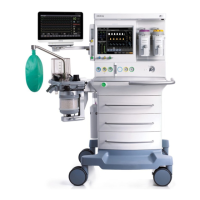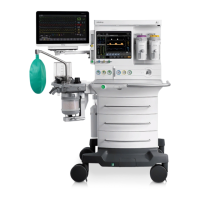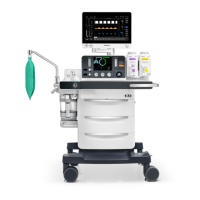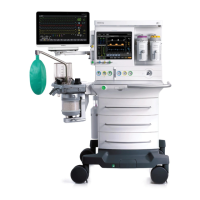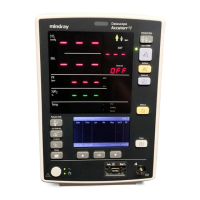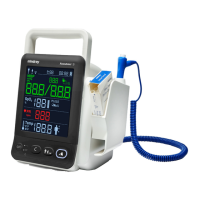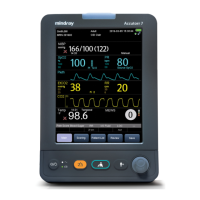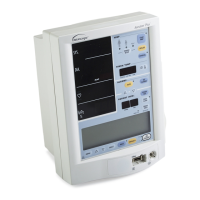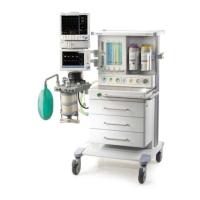1-3
Set the alarm limits properly based on the patient conditions so that the alarm is
triggered before a hazardous situation occurs. Incorrectly set alarm limits may
result in operating personnel not being aware of drastic changes in the patient’s
condition.
Connection of both medical and non-medical equipment to the auxiliary mains
socket outlet(s) may increase the leakage currents to values exceeding the allowable
limits.
Electric shock and fire hazard. Do not clean the equipment while it is powered on
and/or plugged into an outlet.
Disconnect the power plug from the mains supply before removing the rear panels
or servicing the equipment.
Malfunction of the central gas supply system may cause more than one or even all
devices connected to it to stop their operation simultaneously.
The anesthesia system will cease to deliver gas when the gas supply pressure is
smaller than 200 kPa (29 psi).
Standard gas terminal connectors tailored to the attributes of gases should be used
on the gas supply hose assembly to avoid damage to people and materials from
improper connectors used.
Use a cleaning and disinfection schedule that conforms to your institution's
disinfection and risk-management policies.
Refer to the material safety data sheet as applicable.
Refer to the operation and maintenance manuals of all disinfection equipment.
Do not inhale fumes produced during any disinfection process.
Use extreme care while handling the CO2 absorbent as it belongs to caustic
irritant.
Use care in lifting and manipulating vaporizers during the installing process as
their weight may be greater than expected, based on their size and shape.
Do not use talc, calcium stearate, corn starch or similar materials, as these
materials may enter the patient's lungs or airway, causing irritation or injury.
All gas supplies should be of medical grade.
Single use respiratory hoses, face masks, sensors, soda lime, water traps, sampling
lines, airway adapters, and other single use items may be considered potential
biologically hazardous items and should not be reused. Dispose of these items in
accordance with hospital policy and local regulations for contaminated and
biologically hazardous items.
To avoid endangering the patient, do not perform test or maintenance when the
equipment is in use.
Review the performance specifications of the disposal system that the transferring
and receiving systems are intended to be used with, to ensure compatibility.
The equipment should not be used adjacent to or stacked with other equipment. If
adjacent or stacked use is necessary, the equipment should be observed to verify
normal operation in the configuration in which it will be used.
Ensure that the current alarm presets are appropriate before use on each patient.
A hazard can exist if different alarm presets are used for the same or similar
